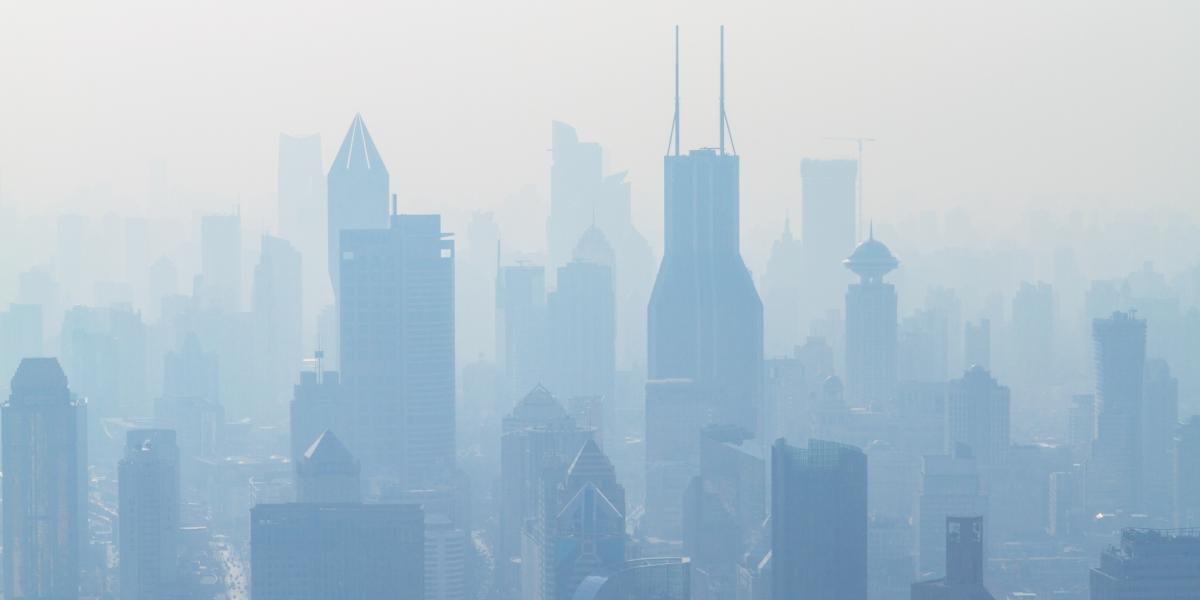
Last November I was leaving the hospital with my newborn in my arms. Air quality in Los Angeles was at one of the worst levels of the year due to the Woolsey fires, and my airways and throat felt unusually dry and irritated. All I could think was: how quickly can we get our newborn home? How many more minutes must he be exposed to this pollution? It just so happens that based on my own research findings, I know how detrimental pollution can be to infant health. And research done by many other economists demonstrates the long-run impacts of early exposure to pollutants.
By the time we got home, my tiny son had a runny nose. He had been alive for only 4 days, and his body was already reacting to foreign particles it was meeting for the very first time. It was extremely concerning to me to think how these high levels of air pollution could be the new normal in LA during fire season. I was most worried about air pollution levels of 41 µg/m3--four times the World Health Organization standard. And for reference, an average day in LA is around 15 µg/m3, and the average concentration in China’s 10 most polluted cities is well above 100 µg/m3, or ten times the World Health Organization standard.
If I was a mom living in one of these Chinese cities, I would surely be trying to move somewhere else. And many people are. In a 2015 New York Times article, Lise Wagnac, a resident of Beijing, was quoted saying “I will be leaving Beijing soon to move to Ningbo, in the eastern province of Zhejiang, because of my health.… [F]or the past six months…I’ve had chronic chest pain and a hard time breathing on a daily basis.”
But moving in China is not as easy as moving in the U.S. Since the 1950’s, China has had a Household Registration System (HRS), also known as the hukou system. Under this system, the government keeps a record of the legal residence and family relations for every citizen from birth to death. The system was originally devised to constrain rural-to-urban migration, and it was one of several policies designed to control the size and composition of the Chinese population across different regions. The hukou system became more flexible in the 1990’s, allowing certain individuals to change their official registration, but such changes are typically only available to well-educated and wealthy citizens.
China’s combination of high air pollution concentrations and high within-country moving costs motivated my coauthors, Shuai Chen and Peng Zhang, and me to ask whether the country’s citizens are actually able to protect themselves from pollution through migration. The challenge in answering this question empirically is that air pollution is generally the result of high economic activity, and high economic activity also comes with higher wages--a big “pull” factor for migration. In other words, it is difficult to separate the effect of these two distinct migration forces in the data.
We aimed to answer this question in a study using a “quasi-experiment” to isolate the effect of pollution on migration from other factors. You can think of a quasi-experiment as an opportunity, in our case offered by natural meteorological phenomena, to examine the responses of individuals to quasi-random exposure to air pollution. Because the occurrence of these meteorological phenomena is completely independent of economic activity, we can effectively overcome the issue of the linkage between these two forces of migration. The findings of our study are striking, particularly when you know how challenging it is to migrate in China. We found that a 10% increase in air pollution leads to a 2.8 % reduction in the adult (15-60 years of age) population in any given county. This decrease in population is the result of more people moving out and fewer people moving in, and it includes official migrants and unofficial migrants. We also found that a 10% reduction in air pollution attracts a flow of unofficial immigrants that is equivalent to 1.7% of the local population in a county.
Another interesting story emerges when you consider the demographic composition of these population flows. Migration responses are twice as large from people with a college education as from people with a junior high school degree or less. This could be explained by the lower migration costs enjoyed by the college educated who can change their hukou, as well as the greater awareness this demographic possesses of the effects of air pollution.
It is also worth noting that migration rates among women are much higher than those of men across all educational levels. In fact, in the cohort of adults between 30 and 45 years of age, women are the only ones migrating in response to air pollution. Given the uneven gender ratios in China, it is unlikely that all of these women are single. This leads us to believe that at least some of these moves yield split families where women and children live in low-polluted counties, and men stay behind in locations with higher wages and higher pollution levels.
As someone who has moved several times for work and family reasons, I know how disruptive and costly a family move can be. But would I move again to protect my children from pollution levels that significantly exceed World Health Organization standards? Absolutely.



